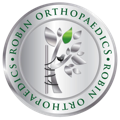Dislocations & Severe soft tissue injuries
LOADING
A dislocation is an injury where two (or more) parts of a joint are separated and can no longer move in their normal fashion. Commonly dislocated joints include:
There are a few structural features of any joint that help keep all the components moving together and preventing most peoples’ joint from dislocating. This includes:
Very rarely it may be impossible to reduce the dislocation with closed techniques as muscle, tendon or nerves may have been trapped between the joint surfaces. In these uncommon cases an operation will be required to perform an “open reduction”, which allows the surgeon to remove the interposing structure and return the bones to their correct position.
- shoulder (gleno-humeral) joint – which is between the upper arm and the shoulder blade
- acromio-clavicular joint (AC joint or collarbone) – which lies between the outer end of the collarbone and the top of the shoulder-blade, just above the true shoulder joint
- kneecap (patello-femoral) joint – often mistakenly called a “knee dislocation”, but actual fact the kneecap (patella) slips out towards the outer side of the thighbone (femur). It is much less common to dislocate the femur from the tibia, which is the correct meaning of a true “knee dislocation”
- small joints of the fingers (interphalangeal joints)
There are a few structural features of any joint that help keep all the components moving together and preventing most peoples’ joint from dislocating. This includes:
- the conforming shapes of the two bones involved in forming the joint
- the ligaments that hold the bones in the joint together
- the strength and direction of force of the muscles that move the joint
Very rarely it may be impossible to reduce the dislocation with closed techniques as muscle, tendon or nerves may have been trapped between the joint surfaces. In these uncommon cases an operation will be required to perform an “open reduction”, which allows the surgeon to remove the interposing structure and return the bones to their correct position.
The information above is general. All surgical procedures involve some risk. If you would like advice on your specific condition, please contact the office of Mr Daniel Robin, Melbourne Orthopaedic Surgeon.

